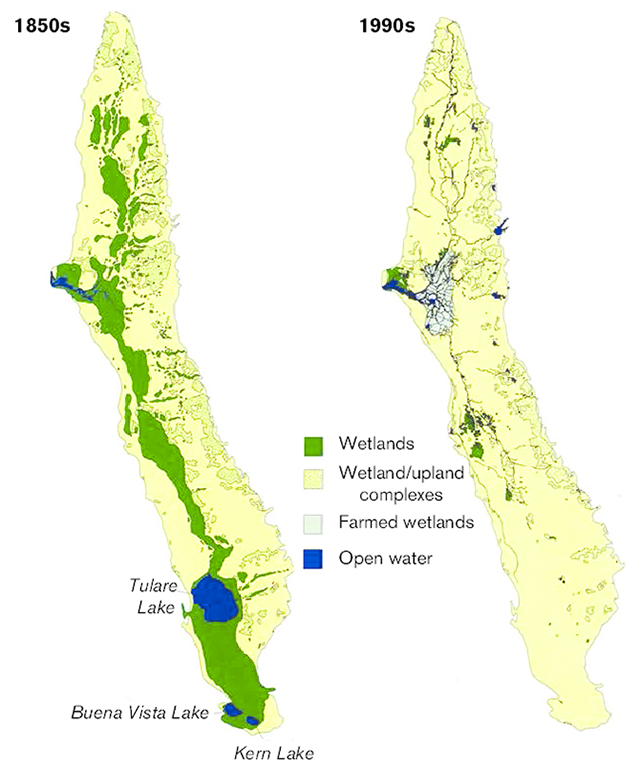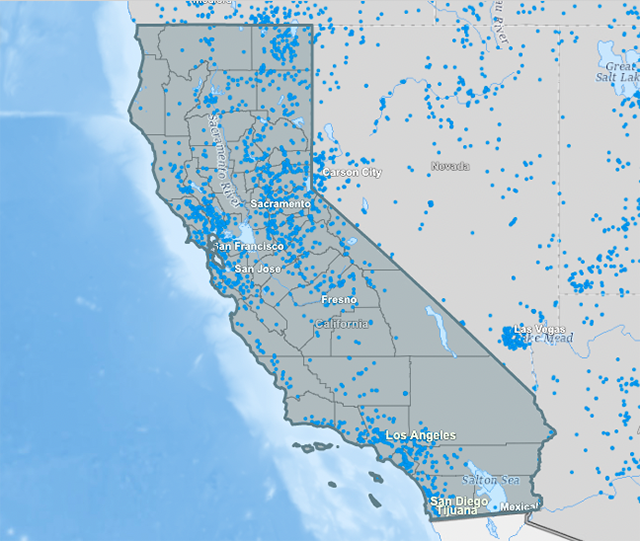An artist's 19th century depiction of Tulare Lake, now vanished. (Tulare County Library)
California’s Central Valley was once a watery landscape of lakes and marshes. Then we sucked it dry.
Fly above California’s Central Valley and a vast earth-toned checkerboard spreads out below. The fertile plain — as big as Tennessee and bathed in sunlight 300 days a year — yields a third of the produce grown in the United States. In his book “Coast of Dreams,” the historian Kevin Starr described the birth of the irrigated culture as “an imposition of will.” He wrote, “Across a century, great public works, ferocious machines, and the back-breaking labor of millions now forgotten had brought into being a place that nature never intended.”

Before the 1848 discovery of gold triggered a stampede of settlers into the state, the Central Valley was endowed with a watery landscape now hard to comprehend: dense riparian forests, swampy marshes, grasslands crowded with elk and pronghorn. Tulare Lake, between Bakersfield and Visalia, was the largest freshwater lake west of the Mississippi, with a surface area four times that of Lake Tahoe. In wet years, it was possible to sail from the lake all the way to San Francisco.
A century and a half later, California draws roughly half of the water out of the state’s environment. Of that, some 80% goes to agriculture.

There are 1,526 dams across the state, including hundreds along the western slopes of the Sierra, where a circulatory system of rivers fans out across the valley below. In the past, when the water ran wild, about 6,250 square miles of wetlands filled the Central Valley. That figure is now less than 350. Cut off from its tributaries, Tulare Lake vanished. A century of groundwater pumping has caused parts of the valley to drop 30 feet. The whole region seems shrouded by dust and heat.
That’s one reason environmentalists like Peter Gleick, of the Pacific Institute, bristle at the demands of some farmers to “Stop dumping our water into the ocean,” a slogan seen on billboards throughout the valley. In an interview with the Los Angeles Times last year, he said California does not “give” water to the environment. “The environment used to have it all.”
This article is from the California Sun, a newsletter that delivers must-read stories to your inbox each morning . Sign up here.
Get your daily dose of the Golden State.